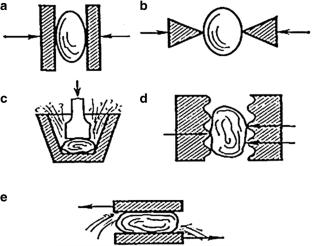用羧酸处理电缆
摘要
在达到其使用寿命结束时,聚氯乙烯(PVC)绝缘的电缆通常留在地下,或被送到垃圾填埋场,在那里它们以每年约7万吨的速度积累。因此,人们对回收铝和铜很感兴趣,这需要开发各种技术电缆加工方案。通常,此类方案涉及机械剥离或高温和/或化学处理技术,后者使用有机溶剂(例如,二氯乙烷,丙酮,乙醚等),能够溶解绝缘中含有的增塑剂,从而导致铝和铜的不合理浪费。此外,与新产生的机械废物和烟道气废物相结合,这些计划造成了额外的严重环境负担。因此,有兴趣开发一种替代和环保的电缆处理工艺,利用弱羧酸(乙酸和柠檬酸)的溶液,以及热水和冷水。研究在弱羧酸中以及在冷水和热水中有效处理电缆废料聚氯乙烯保护绝缘的工艺细节也很重要。所进行的研究包括:在弱羧酸中以及在冷水和热水中处理电缆样品;样品质量变化动力学分析;测定PVC绝缘材料的机械特性。结果,PVC绝缘强度的增加取决于膨胀的百分比被实验确定。结果表明,保温强度可提高约400-1200倍%, depending on the type of solution. The kinetics of the PVC insulation swelling was studied for various types of cables. It was shown that their swelling rate constants have fairly close values, which is indicative of a common physicochemical nature of the process of liquid absorption by insulation. A regression-correlation analysis was used to optimize the process parameters of soaking PVC insulation samples in weak carboxylic acid solutions, as well as in hot and cold water. It has been shown that by optimizing the controlled parameters, the level of strengthening of PVC insulation can be increased by 4800–5280%. The corresponding empirical dependences of the PVC insulation strengthening process were obtained in the following form: \(Y=\upalpha _{0}\cdot f\left(x_{1}\right)\cdot f\left(x_{2}\right)\cdot \ldots \cdot f\left(x_{n}\right),\) where the function variables include the percentage of sample swelling; process duration; solution temperature and pH level.

Upon reaching the end of their useful life, electrical cables with polyvinyl chloride (PVC) insulation most commonly remain in the ground, or are sent to a landfill, where they accumulate at a rate of about 70,000 tons per year. Therefore, there is an interest in recycling aluminum and copper, which requires various technological cable processing schemes to be developed. Typically, such schemes involve either mechanical stripping, or high-temperature and/or chemical treatment technologies, with the latter utilizing organic solvents (e.g., dichloroethane, acetone, diethyl ether, etc.), capable of dissolving plasticizers contained in the insulation, which leads to an unjustified waste of aluminum and copper. Besides, in combination with newly generated mechanical and flue gas waste, such schemes create an additional serious environmental burden. Therefore, there is an interest in developing an alternative and environmentally friendly cable treatment process by utilizing solutions of weak carboxylic acids (acetic and citric), as well as hot and cold water. It is also important to study the specifics of the process of efficient treatment of protective polyvinyl chloride insulation of cable scrap in weak carboxylic acids, as well as in cold and hot water. The conducted studies involve: treating cable samples in weak carboxylic acids, as well as in cold and hot water; analyzing the kinetics of the sample mass change; and determining mechanical characteristics of PVC insulation. As a result, an increase in strength of the PVC insulation depending on the percentage of swelling was experimentally established. It has been shown that the insulation can be strengthened by about 400–1200%, depending on the type of solution. The kinetics of the PVC insulation swelling was studied for various types of cables. It was shown that their swelling rate constants have fairly close values, which is indicative of a common physicochemical nature of the process of liquid absorption by insulation. A regression-correlation analysis was used to optimize the process parameters of soaking PVC insulation samples in weak carboxylic acid solutions, as well as in hot and cold water. It has been shown that by optimizing the controlled parameters, the level of strengthening of PVC insulation can be increased by 4800–5280%. The corresponding empirical dependences of the PVC insulation strengthening process were obtained in the following form: \(Y=\upalpha _{0}\cdot f\left(x_{1}\right)\cdot f\left(x_{2}\right)\cdot \ldots \cdot f\left(x_{n}\right),\) where the function variables include the percentage of sample swelling; process duration; solution temperature and pH level.

 求助内容:
求助内容: 应助结果提醒方式:
应助结果提醒方式:


